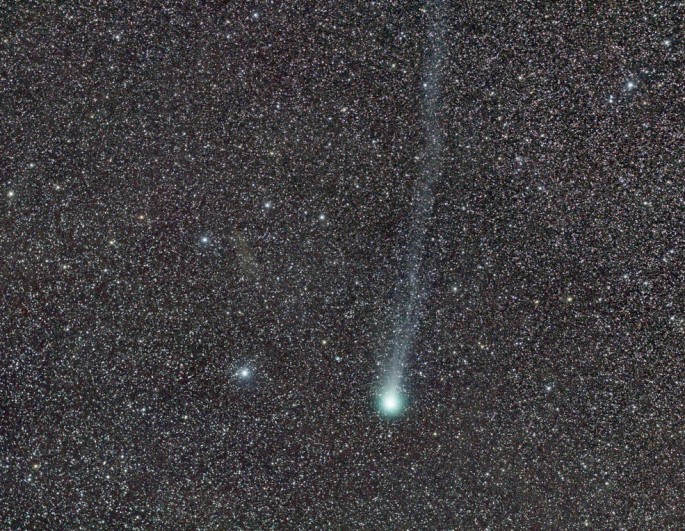Astronomers were able to detect two kinds of organic molecules from space, originating from a comet that visits Earth's orbit only once for every 8,000 years.
In this new study, comet Lovejoy was discovered with traces of ethyl alcohol and a sugar compound known as glycoaldehyde that were identified on the surface ice water of the comet. Researchers were able to use a 30 meter radio antenna located at the Institut de Radioastronomie Millimetrique in Spain to gather spectographic data of the comet's chemical composition.
According to lead author of the study, Nicolas Biver from the Paris Observatory in France, the team discovered that comet Lovejoy is apparently releasing so much alcohol that is equivalent to more than 500 bottles of wine, every second during the comet's peak activity.
Comets are usually composed of rock, ice water and space dust where they can also possess different chemical compounds and other substances. Organic elements have already been detected in comets before but this is the first time that a comet is found to have traces of alcohol and sugar.
According to Dominique Bockelée-Morvan of the French National Center for Scientific Research, this crucial presence of major complex molecules on the comet is an important step in the better understanding of the ideal conditions that made it possible for life to emerge on Earth. She also adds how these organic materials on the comet can also give clues about how the early solar system was formed along with planets and the emergence of living organisms.
Scientists are still weighing in about comets, whether or not they did trigger life on Earth. A prior study a few months ago revealed how comets collided with another space object that infused organic materials together.
However, this new study about Lovejoy is not really considered as solid proof if comets did carry organisms and elements that brought about life on the planet.
Morvan also believes that the next step in proving the theory of comets as life bringers, is to trace back the origins of these organic material. Scientists also believe that this organic matter could sprout from a primordial space cloud that eventually harbored material, creating the solar system. Another theory would also involve that this organic material could form from a protoplanetary disk that surrounded the infant sun.
Comet Lovejoy is only seen from the night sky every 8,000 years where its last visit on Earth was last January 30, 2015. This new study is published in the journal, Science Advances.






















